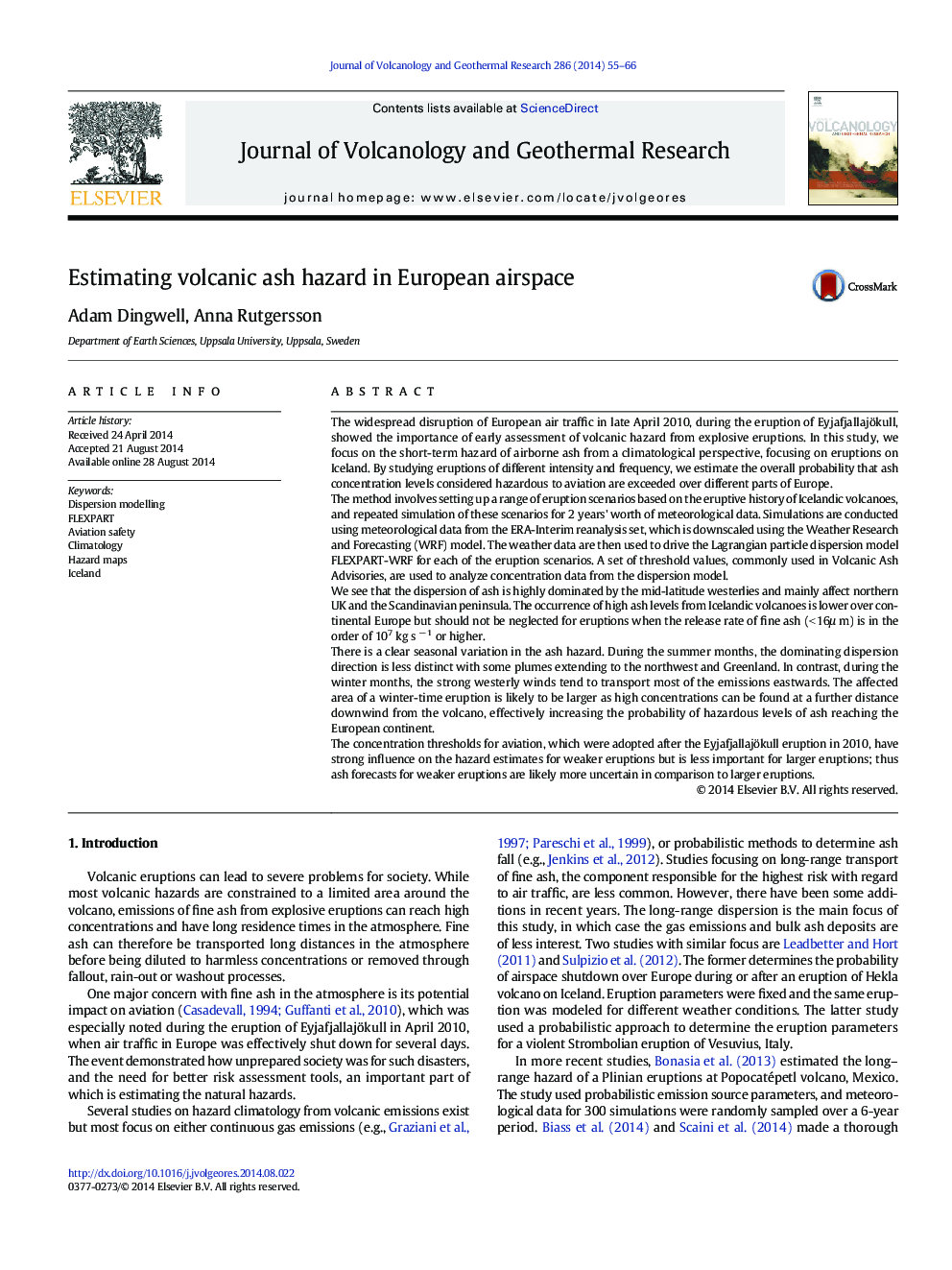| کد مقاله | کد نشریه | سال انتشار | مقاله انگلیسی | نسخه تمام متن |
|---|---|---|---|---|
| 6439656 | 1638336 | 2014 | 12 صفحه PDF | دانلود رایگان |
- Hazard of airborne ash from different hypothetical Icelandic eruptions is modeled.
- Eruptions are simulated for different weather conditions over a 3-year period.
- Winter-time eruptions have a longer range, but the effects are less persistent.
- There is less difference between years for summer-time eruptions.
- Results for weaker eruptions are highly dependent on the selected threshold value.
The widespread disruption of European air traffic in late April 2010, during the eruption of Eyjafjallajökull, showed the importance of early assessment of volcanic hazard from explosive eruptions. In this study, we focus on the short-term hazard of airborne ash from a climatological perspective, focusing on eruptions on Iceland. By studying eruptions of different intensity and frequency, we estimate the overall probability that ash concentration levels considered hazardous to aviation are exceeded over different parts of Europe.The method involves setting up a range of eruption scenarios based on the eruptive history of Icelandic volcanoes, and repeated simulation of these scenarios for 2 years' worth of meteorological data. Simulations are conducted using meteorological data from the ERA-Interim reanalysis set, which is downscaled using the Weather Research and Forecasting (WRF) model. The weather data are then used to drive the Lagrangian particle dispersion model FLEXPART-WRF for each of the eruption scenarios. A set of threshold values, commonly used in Volcanic Ash Advisories, are used to analyze concentration data from the dispersion model.We see that the dispersion of ash is highly dominated by the mid-latitude westerlies and mainly affect northern UK and the Scandinavian peninsula. The occurrence of high ash levels from Icelandic volcanoes is lower over continental Europe but should not be neglected for eruptions when the release rate of fine ash (< 16μ m) is in the order of 107 kg s â 1 or higher.There is a clear seasonal variation in the ash hazard. During the summer months, the dominating dispersion direction is less distinct with some plumes extending to the northwest and Greenland. In contrast, during the winter months, the strong westerly winds tend to transport most of the emissions eastwards. The affected area of a winter-time eruption is likely to be larger as high concentrations can be found at a further distance downwind from the volcano, effectively increasing the probability of hazardous levels of ash reaching the European continent.The concentration thresholds for aviation, which were adopted after the Eyjafjallajökull eruption in 2010, have strong influence on the hazard estimates for weaker eruptions but is less important for larger eruptions; thus ash forecasts for weaker eruptions are likely more uncertain in comparison to larger eruptions.
Journal: Journal of Volcanology and Geothermal Research - Volume 286, 1 October 2014, Pages 55-66
